‘My ambition was to put the industrial scene on the map’ — A guide to L.S. Lowry
For more than 40 years, Britain’s most famous Modernist painter worked full-time as a rent collector. Here are 10 things to know about the life and work of the much-loved Mancunian 1. L.S. Lowry spent almost his entire working life as a rent collector
Born in 1887 and raised in the leafy outskirts of Manchester, Laurence Stephen Lowry (1887–1976) was an only child. His father was an estate agent and his mother was an aspiring pianist. Although the family was middle class, financial difficulties meant they had to move to the insalubrious industrial area of Pendlebury. To help make ends meet, Lowry left school at 16 and clerked at an accountancy firm.
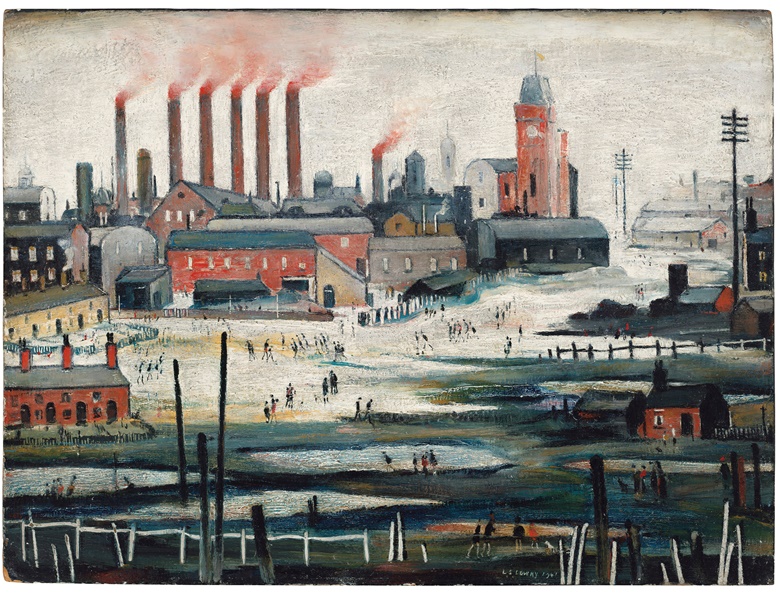
Laurence Stephen Lowry, R.A. (1887-1976), Iron Works, 1941. Oil on board. 17¾ x 24 in (45.1 x 61 cm). Estimate: £500,000-800,000. Offered in People Watching: The Art of L.S. Lowry, 15 June-2 July, Online
Lowry was never a full-time artist: in his early twenties, he took a job as a rent collector, and this would be his primary trade for the next four decades. But he painted most days after work, late into the night — and firmly rejected the label of ‘Sunday painter’, remarking, ‘I’m a Sunday painter who paints every day of the week!’2. Lowry trained under an Impressionist master
Given his day job and the seemingly naïve style of his paintings, it was long assumed that Lowry was self-taught. This is far from true: he took evening classes in painting and drawing at the Salford School of Art and Municipal College of Art, where he studied under the French Impressionist Adolphe Valette. ‘I cannot overestimate his effect on me,’ Lowry later said of Valette.

Laurence Stephen Lowry, R.A. (1887-1976), Landscape with Figures, 1957. Oil on panel. 14 x 10 in (35.6 x 25.4 cm). Estimate: £250,000-350,000. Offered in People Watching: The Art of L.S. Lowry, 15 June-2 July, Online
Lowry never adopted an Impressionist technique or colour range — he often claimed to use just five colours: vermilion, ivory black, Prussian blue, yellow ochre and flake white. What he did share with the Impressionists, however, was a fondness for capturing modern life in an urban landscape.3. A missed train changed his career
Today Lowry is best remembered for his busy scenes of England’s industrial north, complete with looming mills, imposing factories, smoking chimneys and massed ranks of workers. ‘My ambition was to put the industrial scene on the map because nobody [before] had seriously done it,’ he said.
Lowry more than achieved that, says Rachel Hidderley, Senior Director of Modern British & Irish Art at Christie’s in London. ‘It’s hard to think of many artists who dared take on the great industrial progress of the 20th century, let alone paint it so compellingly.’
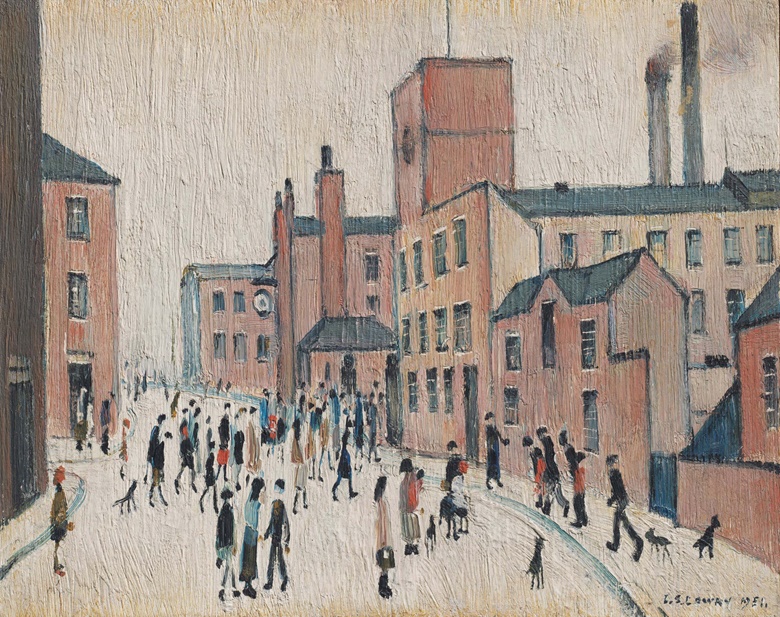
Laurence Stephen Lowry, R.A. (1887-1976), Lancashire Street, 1951. Oil on panel. 9 x 11 in (22.8 x 27.9 cm). Estimate: £150,000-250,000. Offered in People Watching: The Art of L.S. Lowry, 15 June-2 July, Online
Lowry admitted that his inspiration had come from an unlikely source: an eureka moment following a missed train at Pendlebury station. ‘I saw the Acme Company’s spinning mill: the huge, black framework of rows of yellow-lit windows… against the sad, damp-charged, afternoon sky,’ Lowry wrote later in life. ‘The mill was turning out hundreds of little, pinched figures, heads bent down… I watched this scene — which I’d looked at many times without seeing — with rapture.’4. Lowry was a highly underrated portraitist
Lowry’s cityscapes are populated by tiny, stylised figures often referred to as ‘matchstick men’, but in the mid-to-late 1930s, he took to painting people in a very different way, producing a series of haunting portraits.
It’s unclear whether his subjects were real people: Lowry seems to have mixed his own features with those of men and women he passed on the street. The rather dark mood of these pictures, it has been said, was influenced by the death of Lowry’s father in 1932, and the long-term illness of his bedridden mother, with whom Lowry still lived.
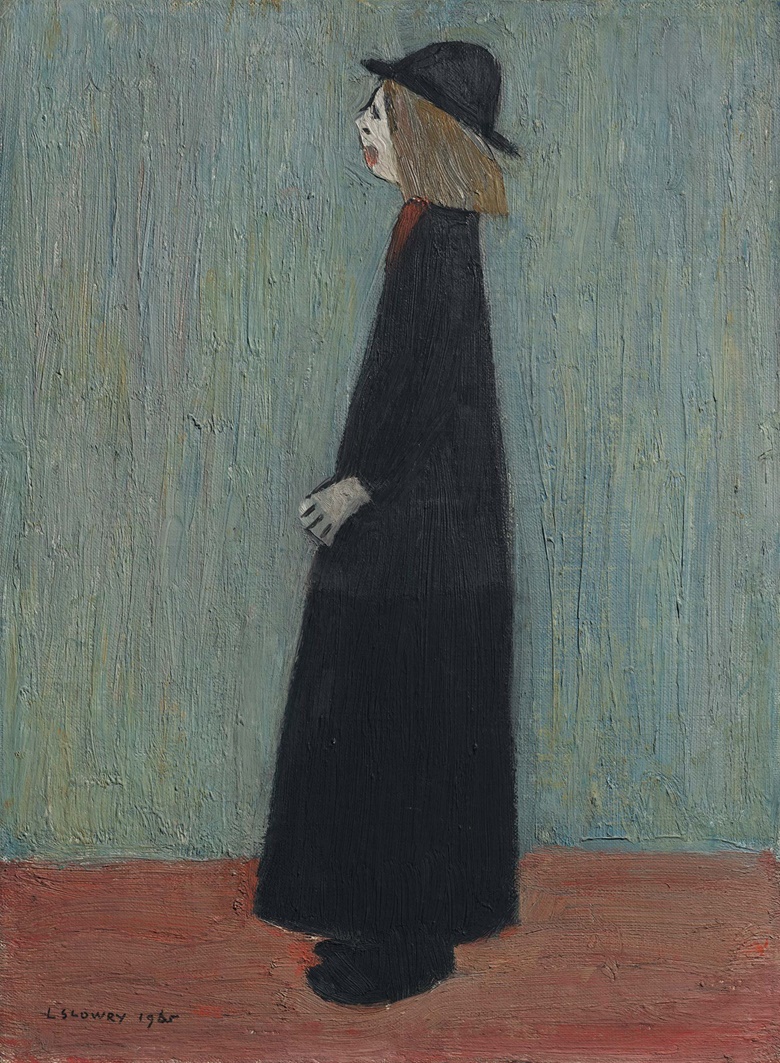
Laurence Stephen Lowry, R.A. (1887-1976), A Woman Standing, 1965. Oil on canvas-board. 16 x 12 in (40.6 x 30.5 cm). Estimate: £120,000-180,000. Offered in People Watching: The Art of L.S. Lowry, 15 June-2 July, Online5. He served as a ‘firewatcher’ in Manchester during the Second World War
During the Blitz, Lowry volunteered two or three nights a week as a firewatcher on the roof of Manchester department stores such as Debenhams and Lewis’s. The destruction wreaked by the Luftwaffe transformed the cityscape, and this was duly reflected in Lowry’s paintings.
In Saturday Afternoon (1941), a group of local children play a pickup game of football on a spot of land that — until its recent demolition by bombs — had accommodated four streets of terraced houses.6. After the Second World War, Lowry’s art became more upbeat
While never grim or gritty, Lowry’s scenes of high-density, working-class urban life weren’t particularly light-hearted, either. There’s a certain uniformity to his figures and a monotony to their daily grind. As Lowry said, ‘I only deal with poverty; always with gloom. You’ll never see a joyous picture of mine.’ But following the Second World War, the mood of his paintings began to shift.
Fun Fair at Daisy Nook (1953), for example, captures a sunny afternoon at the annual Lancashire Easter Fair. With his typical powers of observation and eye for detail, Lowry depicts balloon and whirligig sellers, children in pointed hats, dogs and prams; a slice of urban life on holiday.
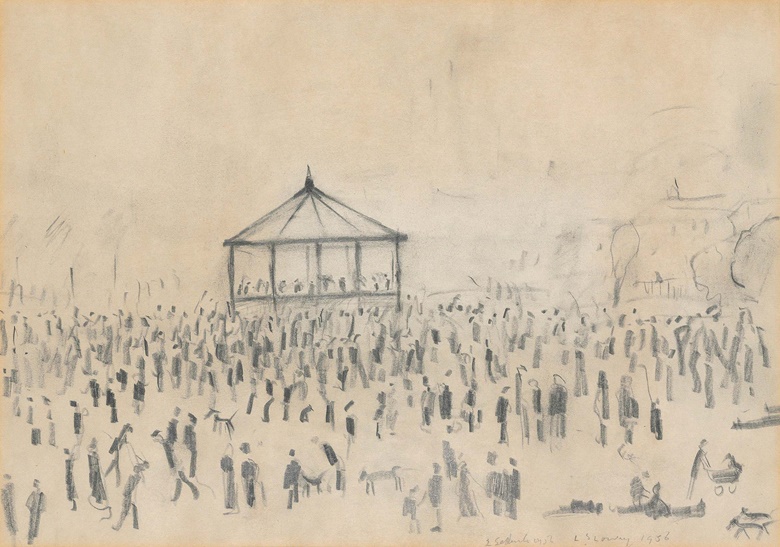
Laurence Stephen Lowry, R.A. (1887-1976), Bandstand, Peel Park, 1956. Pencil on paper. 10 x 14 in (25.4 x 35.6 cm. Estimate: £20,000-30,000. Offered in People Watching: The Art of L.S. Lowry, 15 June-2 July, Online
In Procession in South Wales, Whit Monday, he takes as his subject an annual walk marking the Christian holiday of Pentecost Monday.
‘There are still the incredible crowds,’ says Hidderley of Lowry’s post-war production, ‘but now these people are increasingly at play, not work.’7. Lowry loved football
Lowry supported the Manchester City football team, and regularly attended home matches. He also painted several canvases of fans on their way to, or at games. In his famous 1949 work, The Football Match, which sold for £5,641,250 in May 2011 at Christie’s London, the viewer is offered a panoramic, bird’s-eye view of not just the pitch and supporters, but also the houses and factories beyond.
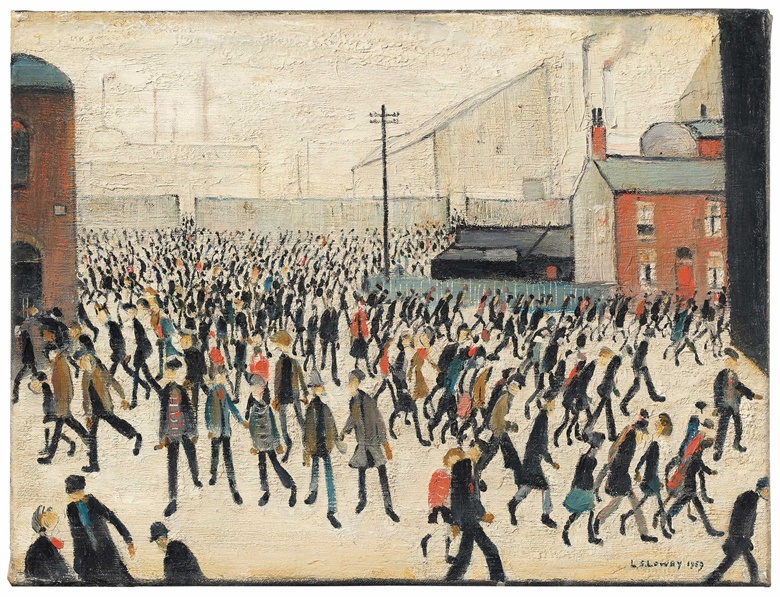
Laurence Stephen Lowry, R.A. (1887-1976), Coming from the Match, 1959. Oil on canvas. 12 x 16 in (30.5 x 40.6 cm). Estimate: £500,000-800,000. Offered in People Watching: The Art of L.S. Lowry, 15 June-2 July, Online
Lowry’s ties to the football club have not been forgotten: in 2016, Manchester City’s owners gifted an (unspecified) artwork by the artist to outgoing manager Manuel Pellegrini.8. Lowry’s lifelong fascination with the sea
Lowry began visiting the seaside as a boy, on family holidays to spots such as Rhyl in North Wales. ‘I’ve always been fond of the sea,’ he observed later in life. ‘How wonderful it is, yet also how terrible. I often think... what if it suddenly changed its mind and didn't turn the tide — and came straight on? If it didn't stop and came on and on and on and on... That would be the end of it all.’
Lowry painted a number of seascapes in the 1940s, 1950s and 1960s. In many cases, says Hidderley, these expanses of water and sky, separated only by the horizon line, are ‘so empty they border on abstraction’. Free of human beings, they are testament to the immeasurable power and presence of nature.9. He turned down a knighthood
Despite working full-time as a rent collector, Lowry enjoyed much recognition for his art in his lifetime. He had his first solo show in London in 1939 at the Lefevre Gallery in Mayfair; he was elected a Royal Academician in 1962; and he served as a visiting tutor at the prestigious Slade School of Fine Art.
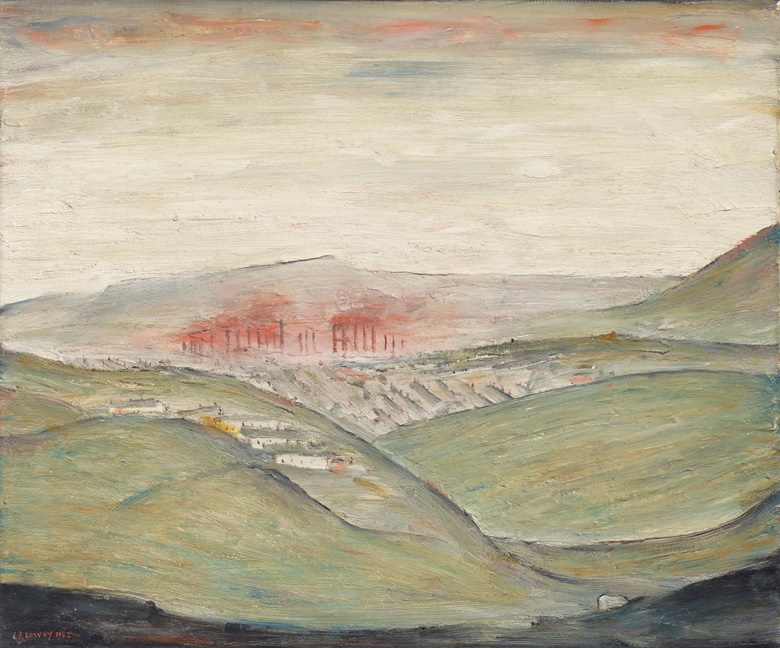
Laurence Stephen Lowry, R.A. (1887-1976). Ebbw Vale Steel Works, 1962. Oil on canvas. 20 x 24 in (50.8 x 61 cm). Estimate: £150,000-250,000. Offered in People Watching: The Art of L.S. Lowry, 15 June-2 July, Online
In 1968, Lowry was even offered a knighthood, but he turned it down. ‘All my life I have felt most strongly against social distinction of any kind,’ he told the Prime Minister at the time, Harold Wilson.10. His favourite artist was Dante Gabriel Rossetti
In 1948, as he started to earn good money as a painter, Lowry moved to the affluent village of Mottram-in-Longdendale, near Manchester. He also began collecting work by artists he admired, particularly the Pre-Raphaelite Dante Gabriel Rossetti. Lowry even started a ‘Rossetti Society’, of which he became the first president. ‘There is no one quite like Rossetti,’ Lowry claimed. ‘His [pictures of] women are very wonderful.’
L.S. Lowry died in 1976, at the age of 88. Unmarried and childless, he left behind a host of paintings and drawings by Rossetti.
- 1
- Bookmark

Bill Graham, Family Dog, Grateful Dead posters & more go up for bid at Turner Auctions + Appraisals
SAN FRANCISCO, CA.- Turner Auctions + Appraisals will present the sale of vintage posters from Bill Graham,...

Freeman's American Furniture, Folk and Decorative Arts Auctions Demonstrates Successes in American Material
PHILADELPHIA, PA—Freeman’s is pleased to announce the results of its April 27 American Furniture, Folk and Decorative Arts auction,...

Examining Edward Gorey’s Market
Edward Gorey is having a moment. Gorey has had many of these over the years—he was...
